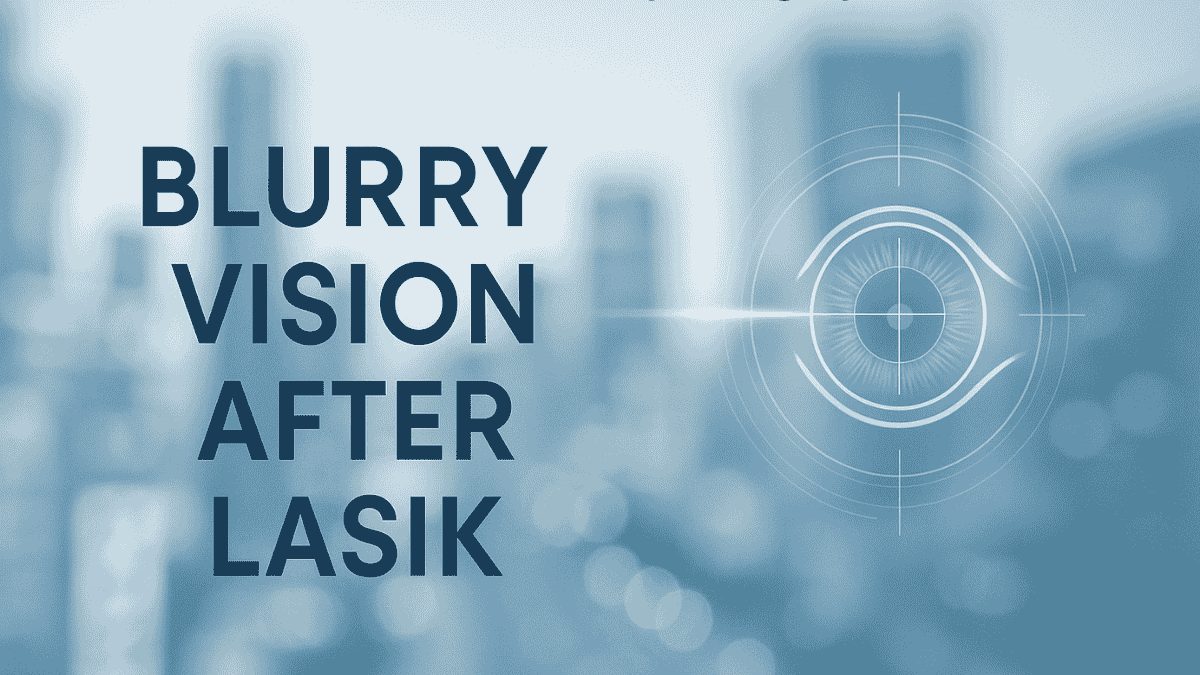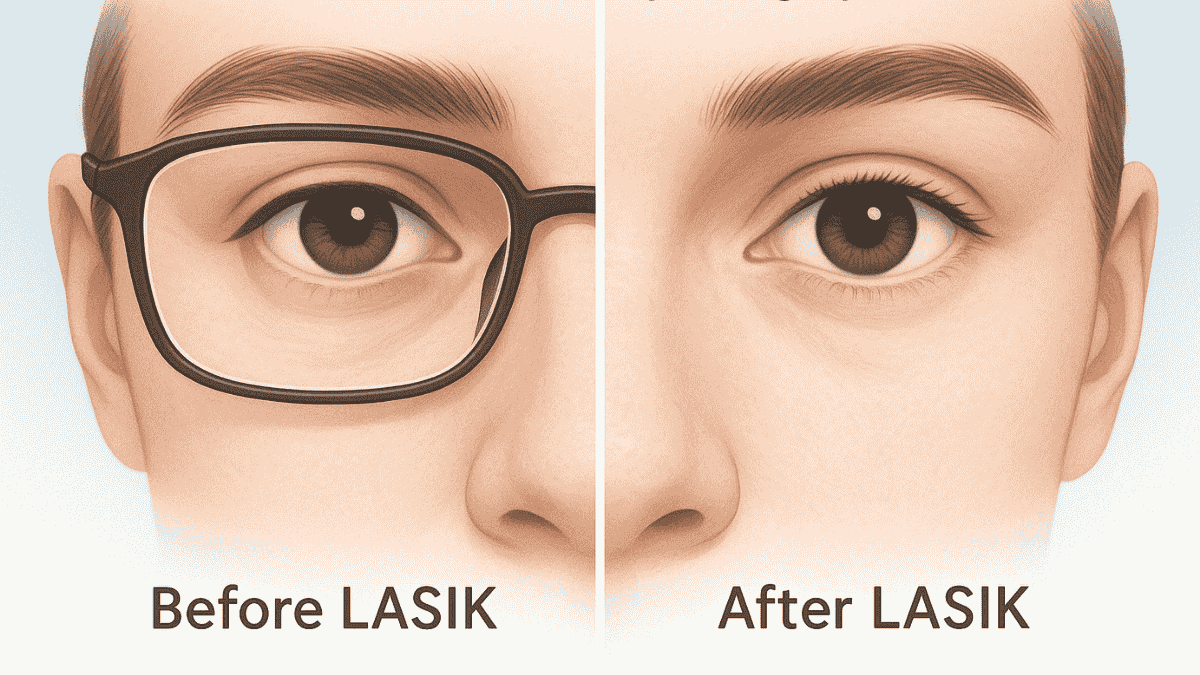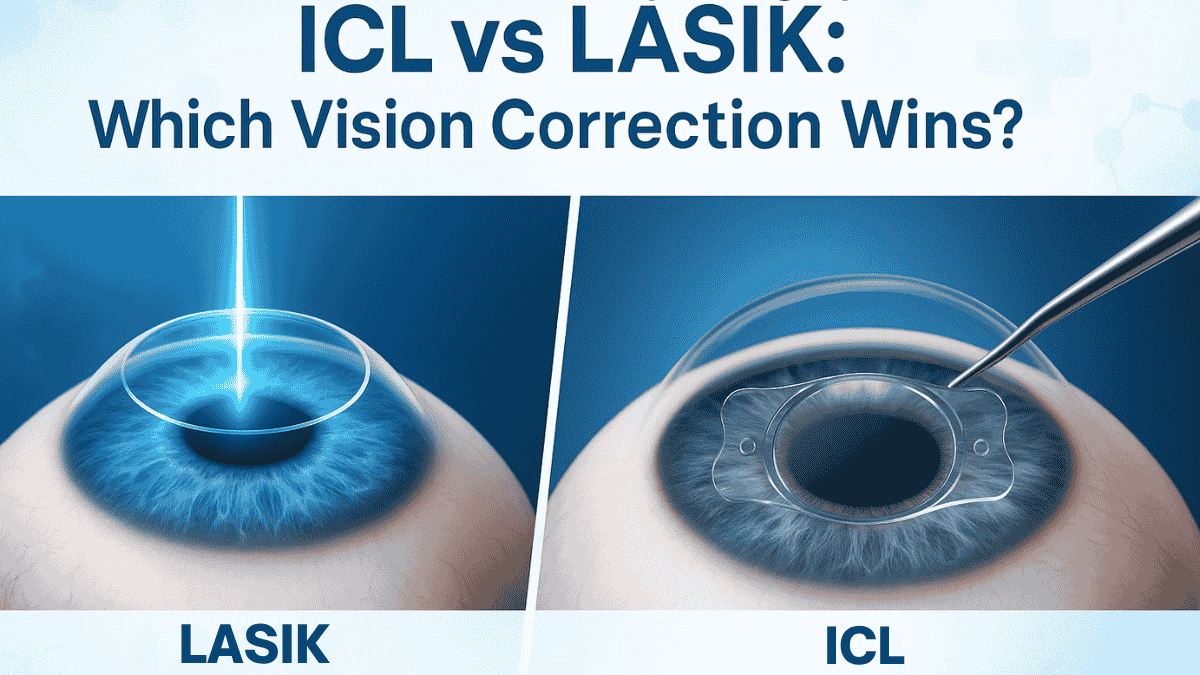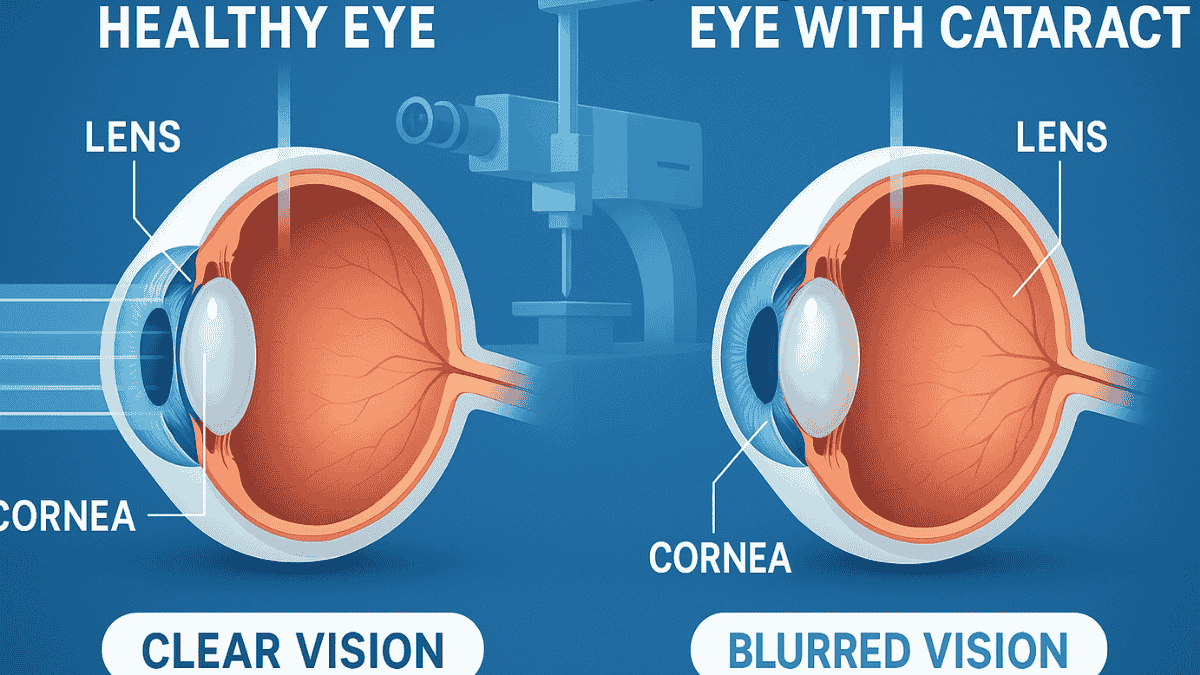
Curious about the long-term effects of LASIK? Many individuals wonder, “Can you get cataracts after LASIK surgery?” This is a frequent and understandable question, particularly for those thinking about this widespread vision correction option.
LASIK, a popular form of laser eye surgery, has assisted countless people in lessening their reliance on glasses and contact lenses. However, like any medical intervention, understanding both immediate outcomes and potential future impacts on your eye health is important. Let’s explore what you need to understand about LASIK surgery and the development of cataracts.
Table of Contents
LASIK and Cataracts
Before addressing the central question, it’s beneficial to clarify what LASIK and cataracts are. This foundational knowledge will help illustrate how these two distinct eye-related topics might intersect over a person’s lifetime. Knowing this helps people live with better vision.
What is LASIK?
LASIK is an acronym for Laser-Assisted In Situ Keratomileusis. It is a highly utilized type of refractive eye surgery aimed at reshaping the cornea, the clear front surface of the eye, to fix common vision problems. These problems include nearsightedness (myopia), farsightedness (hyperopia), and astigmatism.
During the LASIK procedure, an eye surgeon first creates a very thin, precise flap in the cornea. Subsequently, an excimer laser, which is a cool ultraviolet light beam, is used to remove microscopic amounts of corneal tissue, thereby reshaping it. This reshaping alters how light rays are focused onto the retina at the back of the eye, significantly improving laser vision for many a LASIK patient.
What are Cataracts?
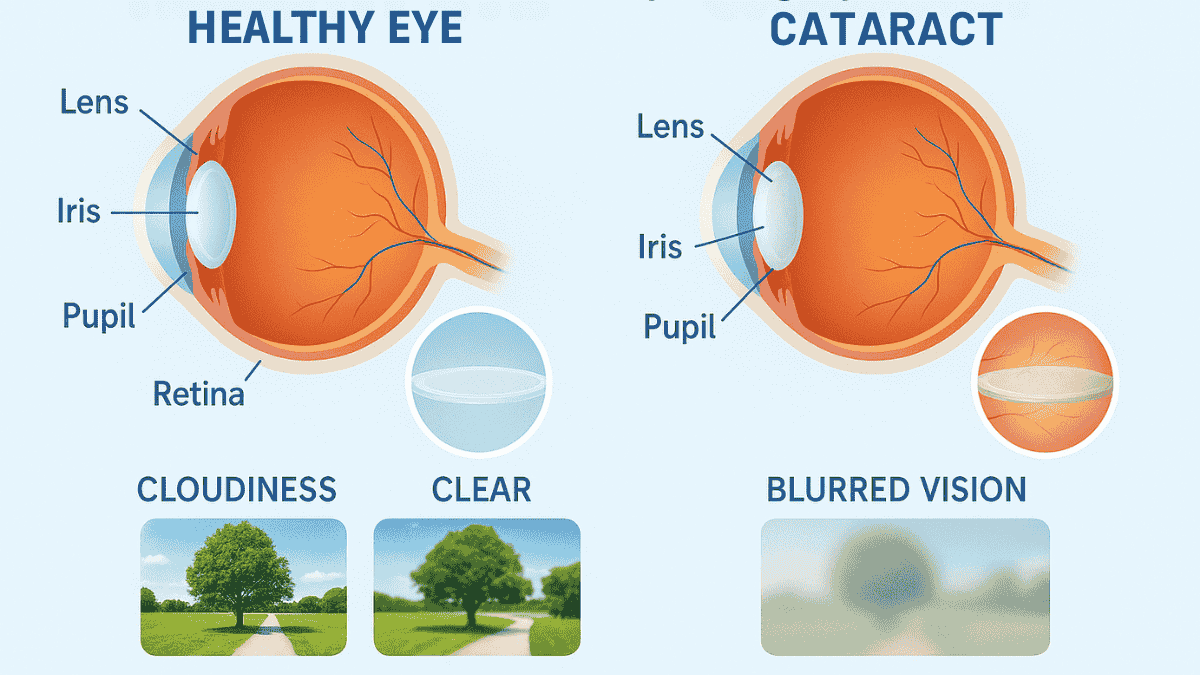
Cataracts are a prevalent eye condition, primarily associated with aging. They manifest when the eye’s natural crystalline lens, located behind the iris and pupil, gradually becomes cloudy and opaque. This cloudiness obstructs the passage of light, leading to blurry or dim vision, and can impact vision quality.
The development of cataracts is typically a slow process, often occurring over many years. Unlike the LASIK eye procedure which modifies the cornea, cataracts form within the eye’s lens. This distinction is critical when discussing the potential link between prior LASIK eye surgery and the subsequent need for cataract treatment.
Can You Get Cataracts After LASIK Surgery?
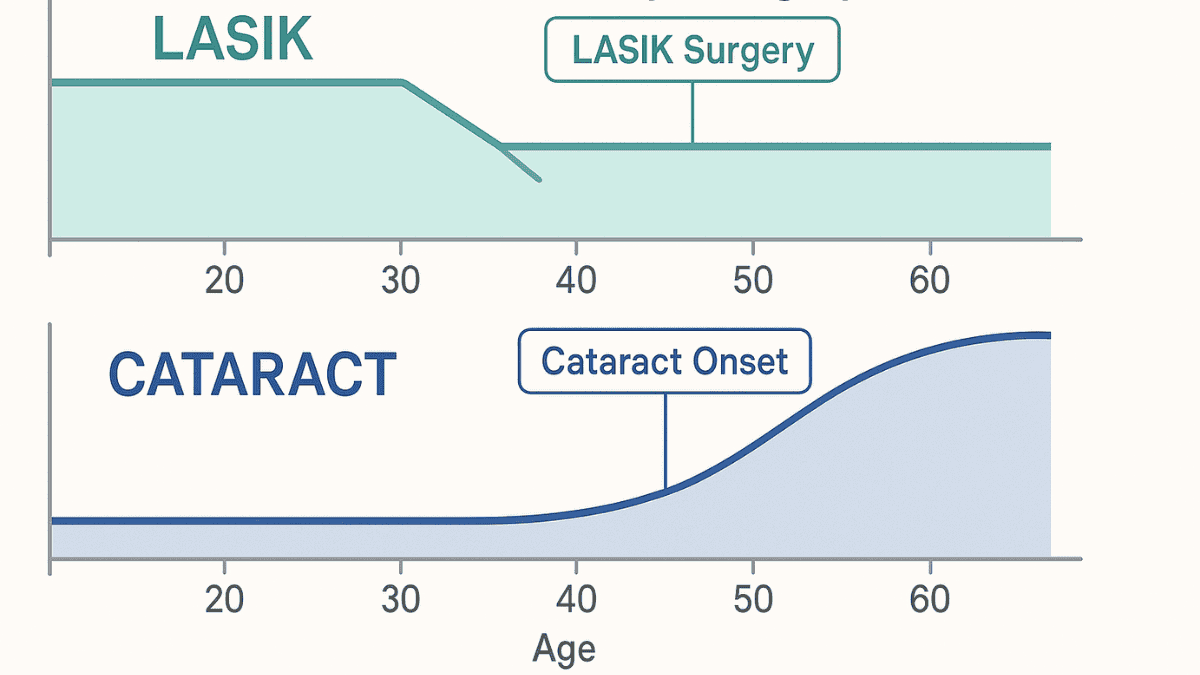
The straightforward answer is yes, it is possible to develop cataracts after having undergone LASIK surgery. However, a crucial point to understand is that LASIK surgery itself does not cause cataracts. The formation of cataracts is a natural aging process that affects most individuals, irrespective of whether they have had a LASIK procedure or any other form of laser eye surgery.
Having LASIK surgery does not act as a shield against developing cataracts later in life, nor does it accelerate their onset. The LASIK procedure specifically targets the cornea and does not involve or alter the eye’s natural lens, which is where cataracts form. Therefore, a LASIK patient has the same likelihood of developing cataracts as someone who has never had laser vision correction.
Research supports this understanding. For example, studies published in respected ophthalmology journals have found no statistically significant increased risk of cataract formation in cataract patients who had previously undergone LASIK. This scientific backing helps alleviate concerns that LASIK might contribute to surgery develop cataracts.
Related Article
LASIK Eye Surgery RisksThe Timeline: LASIK and Cataract Development
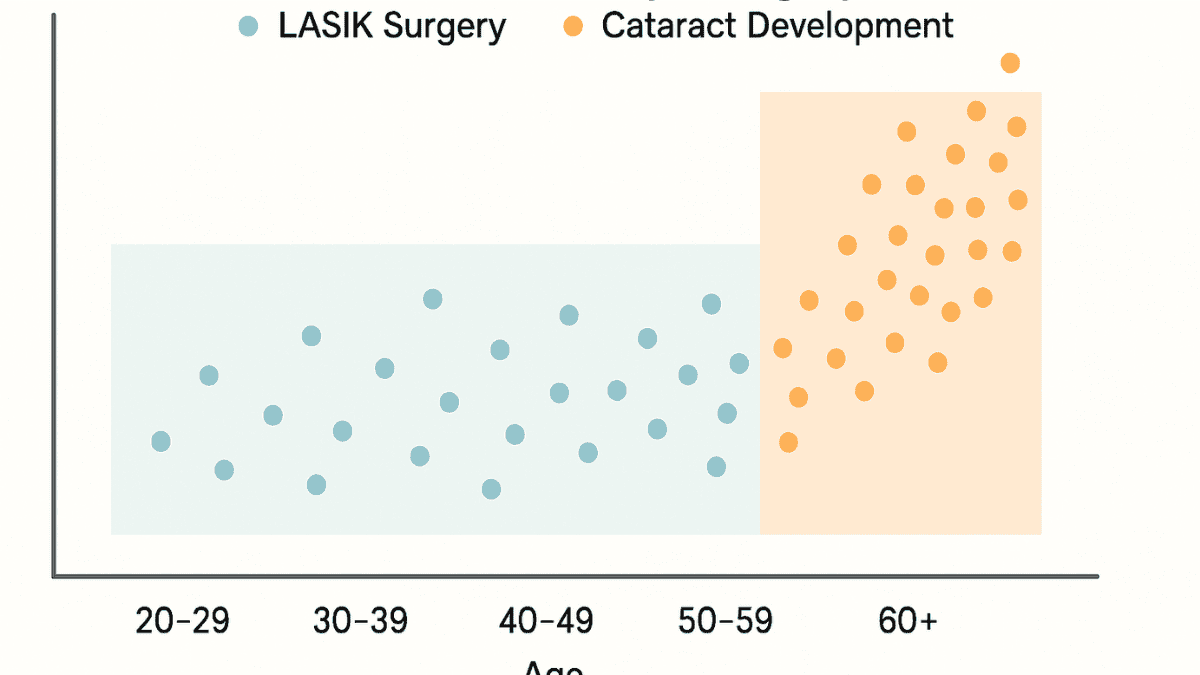
Most individuals who opt for LASIK surgery are typically in their 20s, 30s, or 40s, seeking to correct vision and reduce dependence on corrective eyewear. Cataracts, on the other hand, usually begin to develop and affect vision much later in life, commonly after the age of 60, though some people may develop cataracts earlier due to specific health conditions or genetic predispositions. This age difference means there’s usually a considerable period, often spanning several decades, between a person having LASIK and the potential onset of symptomatic cataracts.
By the time cataracts might become a noticeable vision issue, many LASIK patients have already benefited from years, or even decades, of improved visual acuity and and freedom from glasses or contact lenses. The American Academy of Ophthalmology indicates that the vision correction results from LASIK are generally stable and long-lasting for a majority of patients. It’s perfectly normal for eye health to change with age, leading to conditions like cataracts eventually.
Cataract Surgery After LASIK: What You Need to Know
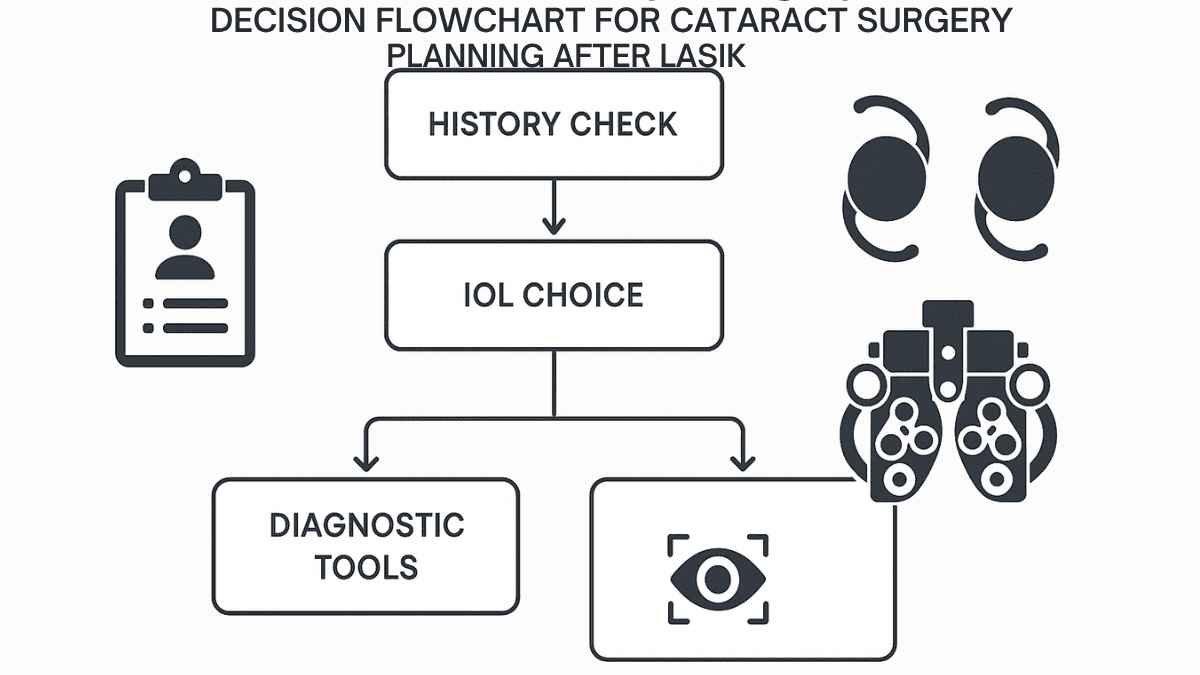
If you have had LASIK surgery and find yourself developing cataracts years later, it is important to know that you can still undergo successful cataract surgery. However, there are specific considerations that your eye doctor and cataract surgeon will need to take into account. Informing your medical professionals about your LASIK history is vital for planning your cataract treatment.
Calculating Intraocular Lens (IOL) Power
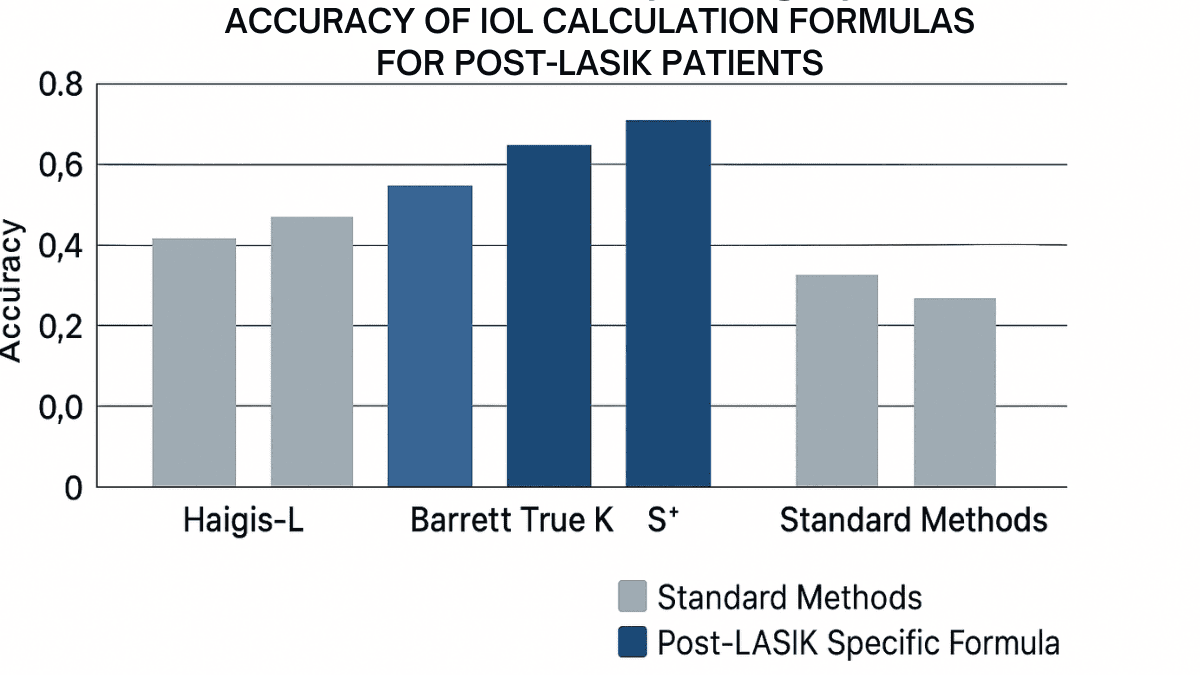
Cataract surgery involves the removal of the clouded natural lens and its replacement with a clear artificial intraocular lens (IOL). A key part of planning cataract surgery is accurately calculating the required power of this IOL to achieve the desired vision outcome. For post-LASIK cataract patients, this calculation can be more intricate.
LASIK surgery reshapes the cornea, altering its curvature and how it refracts light. Standard IOL power calculation formulas, which are highly accurate for eyes that haven’t undergone refractive surgery, may be less precise for post-LASIK eyes. This is because these formulas often rely on the original, unaltered relationship between the anterior and posterior corneal curvature, which LASIK changes primarily on the anterior surface. Many medical professionals agree that special attention is needed here.
Eye surgeons now have access to advanced formulas and techniques specifically developed for post-LASIK cataract patients. These methods, such as the Haigis-L, Shammas-PL, or Barrett True K formulas, adjust for the corneal changes induced by LASIK. Having your pre-LASIK refraction data (your glasses or contact lens prescription before LASIK) can also be very helpful for your cataract surgeon to fine-tune IOL calculations and improve cataract surgery outcomes.
Related Article
ICL vs LASIK: Understanding the AlternativesSpecialized Measurements and Diagnostic Tools
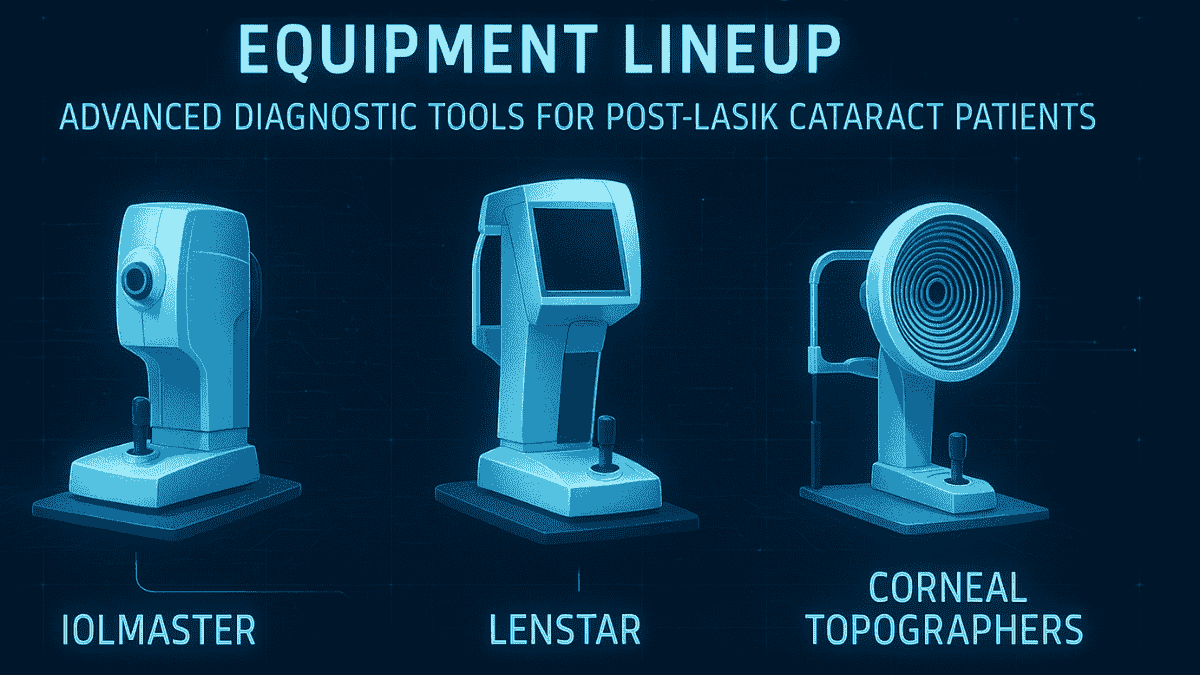
To ensure the most accurate IOL power calculation for individuals with a LASIK history, eye doctors will likely employ specialized diagnostic tools and measurement techniques during the eye exam. These advanced instruments go beyond standard biometry.
Devices like the IOLMaster or Lenstar use optical biometry (e.g., partial coherence interferometry or optical low-coherence reflectometry) to measure the eye’s axial length, corneal curvature (keratometry), and anterior chamber depth with high precision. Some advanced topographers can also provide detailed maps of both the front and back surfaces of the cornea, which is valuable information for post-LASIK eyes. These precise measurements are critical for achieving optimal vision quality after cataract surgery LASIK.
Importance of Discussing Your LASIK History
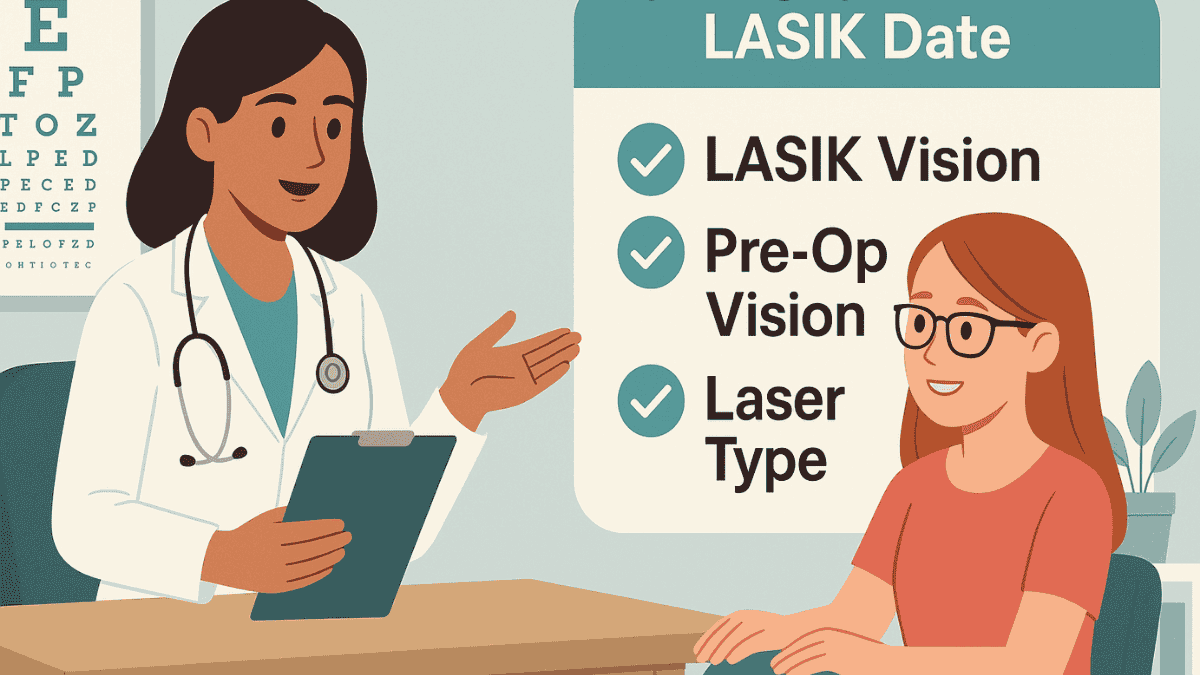
It is absolutely essential to inform your eye doctor and cataract surgeon about your previous LASIK surgery when you are being evaluated for cataracts. This information is a cornerstone for planning successful cataract surgery. Details about your LASIK procedure, if available (such as the type of laser used or the amount of correction), can be very beneficial.
Your doctor might ask for your pre-LASIK vision measurements or any records from your LASIK surgeon. Sometimes, this information can be retrieved via a patient portal if your previous eye care provider offered one. Providing a complete medical and eye history allows the surgical team to select the most appropriate IOL calculation formulas and surgical approach for your specific situation, aiming for the best possible visual acuity and to correct vision effectively.
Related Article
What Happens During a LASIK Consultation?Intraocular Lens (IOL) Options for Post-LASIK Patients
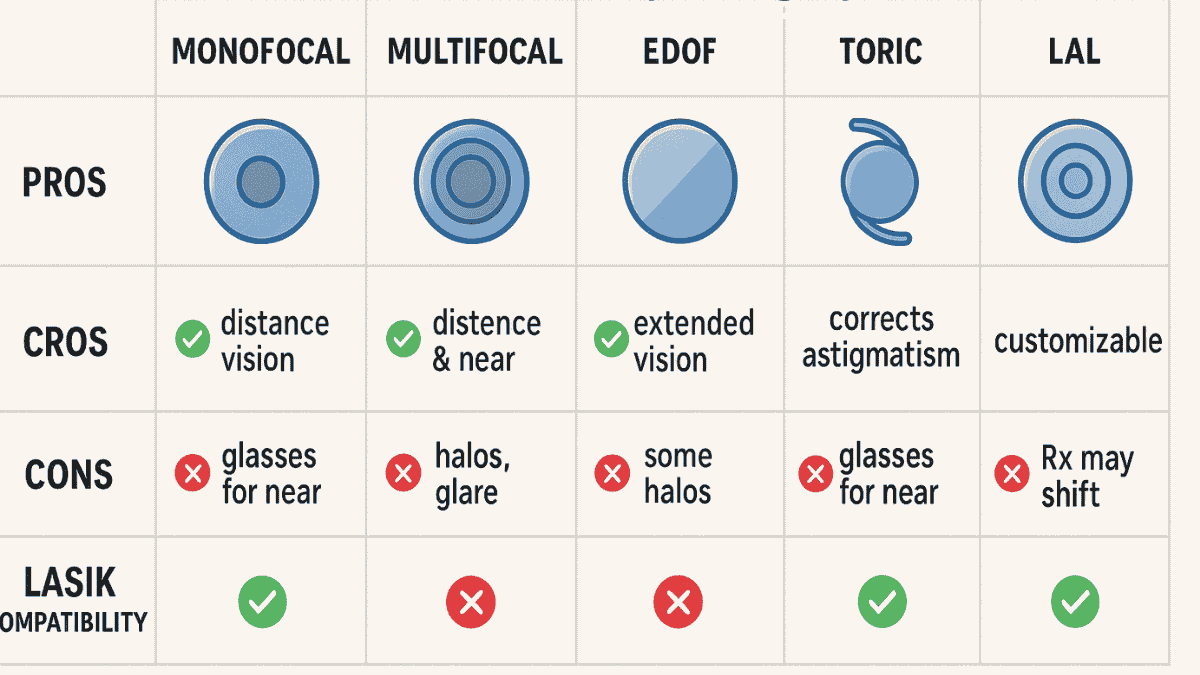
Post-LASIK cataract patients have several types of intraocular lenses (IOLs) to correct vision. The choice of IOL will depend on your visual needs, lifestyle, the health of your eyes (beyond the cataract), and your surgeon’s recommendations. Common vision correction options include:
- Monofocal Lenses: These are the standard IOLs, designed to provide clear vision at a single focal point (usually distance). Patients with monofocal lenses often still need reading glasses for near tasks. For post-LASIK patients, monofocal lenses can be a reliable option, especially if targeting good distance vision.
- Multifocal or Extended Depth of Focus (EDOF) Lenses: These advanced surgical lenses aim to provide clear vision at multiple distances (near, intermediate, and far), potentially reducing the need for glasses. However, for post-LASIK eyes, the altered corneal shape can sometimes affect the performance of certain multifocal IOLs, potentially leading to increased glare or halos. Careful patient selection and discussion of potential side effects like light sensitivity are crucial.
- Toric Lenses: If you have significant astigmatism (either pre-existing or resulting from previous surgeries), toric IOLs can correct it at the time of cataract surgery. This is often a good choice for post-LASIK patients with residual astigmatism.
- Light Adjustable Lenses (LALs): This is a newer technology where the IOL power can be adjusted non-invasively using a UV light treatment after the cataract surgery and initial healing. This allows for very precise fine-tuning of the vision correction, which can be particularly advantageous for post-LASIK eyes where IOL power calculation can be more challenging. This option offers excellent correction cataract surgery results.
Discussing these correction options thoroughly with your cataract surgeon will help determine the best fit for your long-term eye health and visual goals. Some patients may even consider a clear lens exchange if cataracts are not yet significantly developed but vision issues persist.
Factors Influencing Cataract Development (Independent of LASIK)
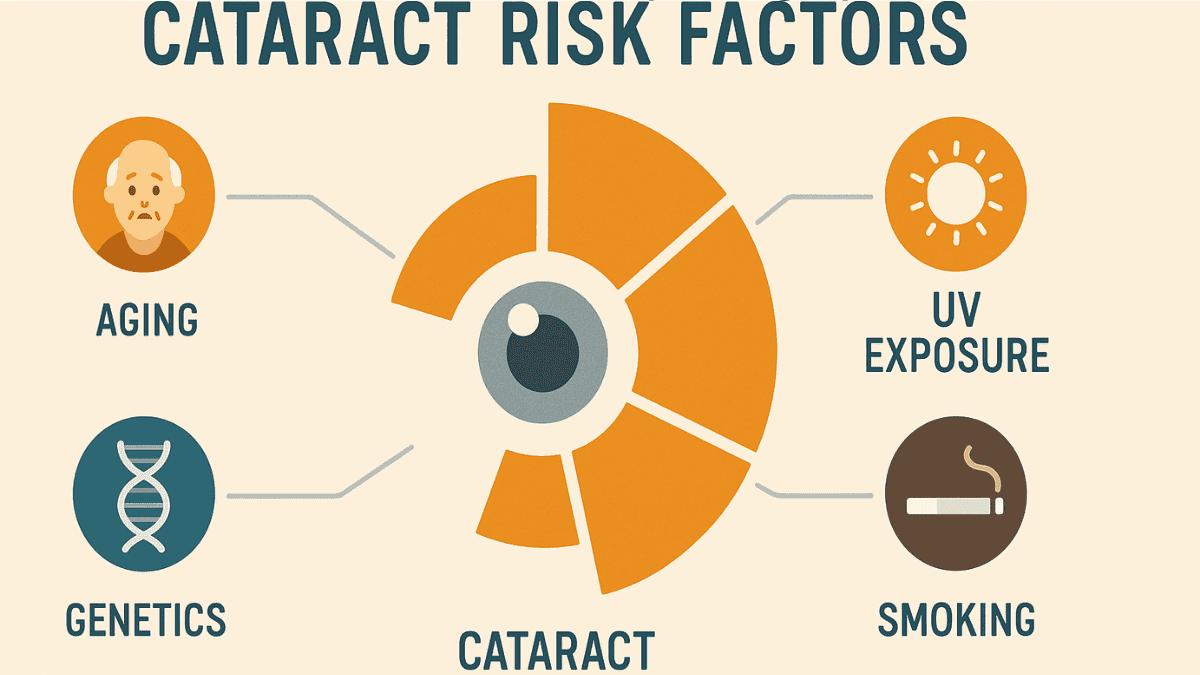
It’s important to reiterate that while LASIK surgery targets the cornea for vision correction, it does not cause or prevent the natural development of cataracts in the lens. Cataracts develop for various reasons, largely independent of whether a person has undergone a LASIK eye surgery procedure. Understanding these factors can provide a clearer picture of cataract etiology.
Primary risk factors for developing cataracts include:
- Aging: This is the most common cause. As people live longer, the proteins in the eye’s lens can break down and clump together, forming a cataract.
- Genetics: A family history of cataracts can increase an individual’s predisposition to develop them.
- UV Radiation Exposure: Prolonged exposure to ultraviolet (UV) light from the sun without adequate eye protection can contribute to cataracts earlier.
- Smoking: Smoking significantly increases the risk of developing cataracts.
- Diabetes: Individuals with diabetes are at a higher risk of developing cataracts, often at an earlier age. Good general health management is key.
- Long-term Steroid Use: Prolonged use of corticosteroid medications, whether systemic or topical (eye drops), can induce cataract formation.
- Previous Eye Injury or Eye Surgery: Trauma to the eye or certain other types of eye surgery (not LASIK on the cornea) can sometimes lead to cataracts.
- Other Health Conditions: Certain metabolic disorders and health conditions can be associated with an increased risk.
Maintaining good overall general health, protecting your eyes from UV radiation, and avoiding smoking can help mitigate some of these risks. Regular eye exams are crucial for early detection of cataracts and other eye diseases like macular degeneration.
Related Article
Dry Eye Syndrome and Vision HealthThe Benefits of Modern Cataract Surgery
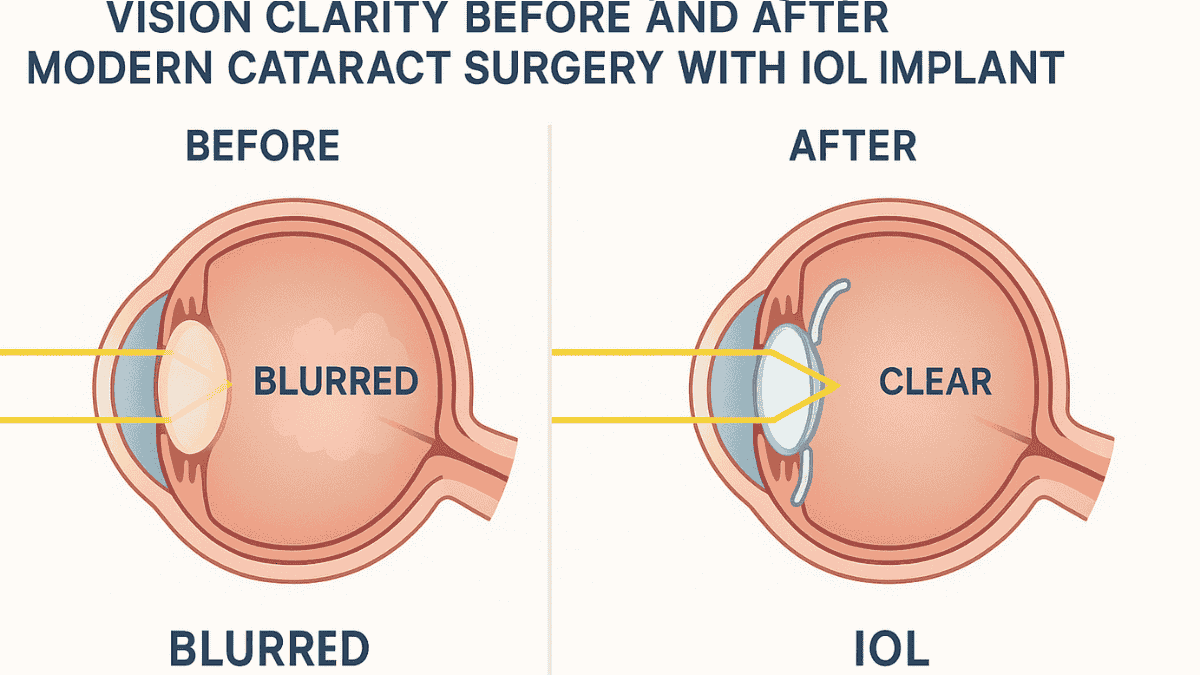
Cataract surgery has advanced significantly over the years, becoming one of the safest and most effective surgical procedures performed today. Modern techniques and technologies often allow for not only the removal of the cloudy cataract but also the correction of pre-existing refractive errors, potentially enhancing vision beyond what was achieved with prior LASIK. This means a successful cataract surgery can further improve vision.
Many individuals who undergo cataract surgery after having had LASIK are very pleased with their visual outcomes. With careful planning and the selection of an appropriate intraocular lens (IOL), including multifocal or toric options, patients can often achieve clear vision at various distances. This can further reduce dependence on reading glasses or other corrective eyewear, leading to a high degree of satisfaction.
Choosing a Cataract Surgeon for Post-LASIK Patients
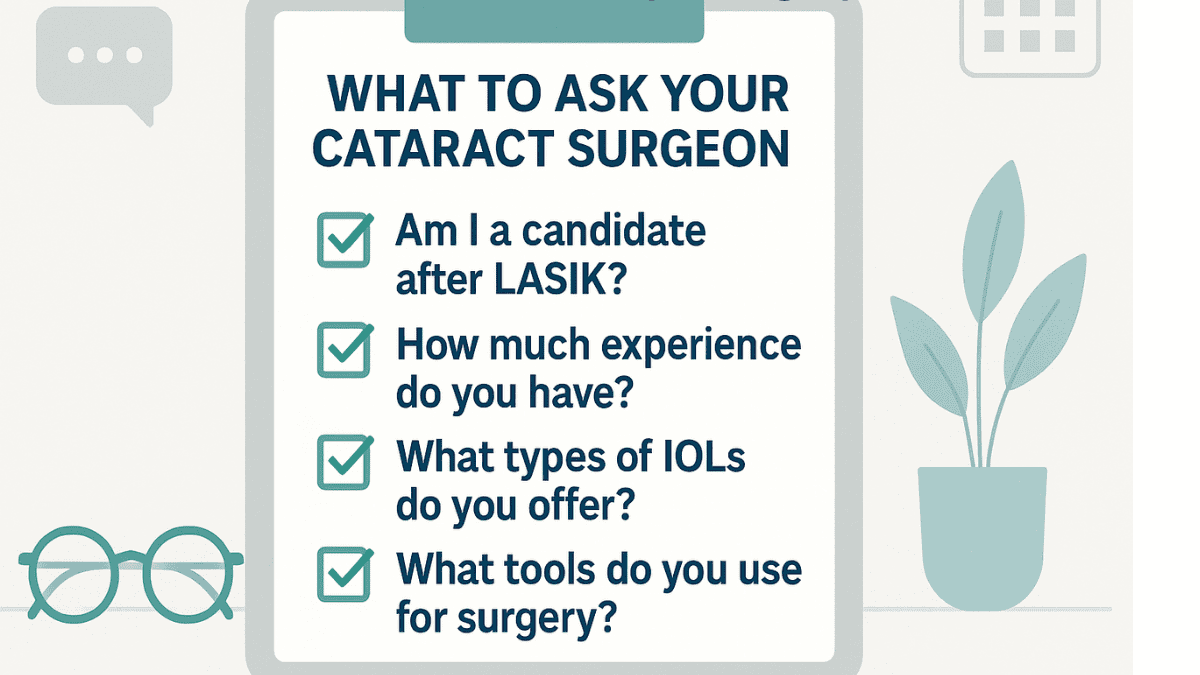
Selecting an experienced cataract surgeon is important for anyone undergoing cataract surgery, but it’s particularly vital for post-LASIK patients due to the aforementioned complexities in IOL calculations. Look for a surgeon who has specific experience and a good track record with post-LASIK cataract surgery cases.
When consulting with potential surgeons, don’t hesitate to ask about their experience with patients who have a LASIK history. Inquire about the technologies they use for measurements and IOL calculations, and how they approach IOL selection for eyes that have undergone previous laser vision correction. A knowledgeable surgeon will be able to discuss the nuances and set realistic expectations for your surgery recovery and final vision quality.
Maintaining Eye Health After LASIK
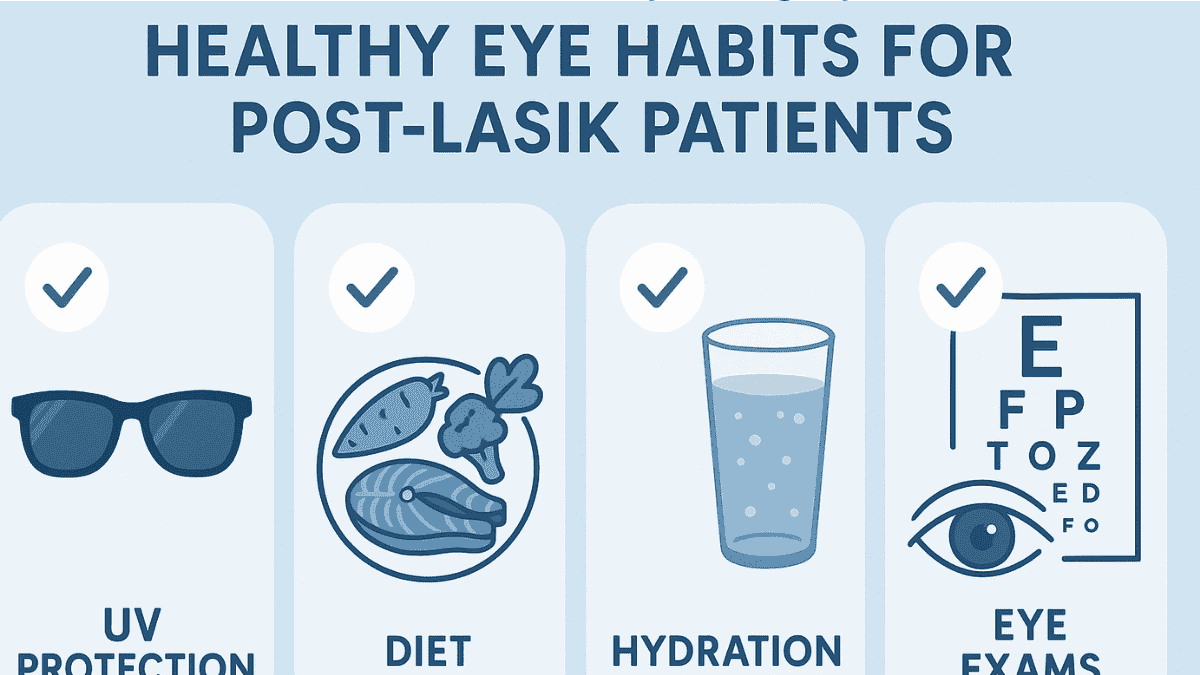
While LASIK surgery does not heighten your risk of developing cataracts, diligent care for your eyes remains essential for long-term eye health. Protecting your investment in laser vision involves ongoing attention to your eyes’ well-being. Regular comprehensive eye exams are fundamental, even if your vision seems perfectly clear.
Here are some actionable tips to help maintain good eye health throughout your life:
- Schedule Regular Eye Exams: Continue with routine eye exams as recommended by your eye care professional. These check-ups can detect early signs of cataracts, glaucoma, macular degeneration, and other eye diseases.
- Protect Your Eyes from UV Radiation: Wear sunglasses that block 100% of UVA and UVB rays when outdoors. This helps protect against conditions like cataracts and macular degeneration.
- Eat a Balanced Diet: A diet rich in fruits, vegetables (especially leafy greens), and omega-3 fatty acids supports overall eye health. Vitamins A, C, and E are particularly beneficial.
- Avoid Smoking: Smoking is linked to an increased risk of cataracts, macular degeneration, and other eye problems. Quitting smoking can significantly benefit your eye health.
- Manage Chronic Health Conditions: Systemic diseases like diabetes and hypertension can impact your eyes. Proper management of these health conditions is crucial for preserving vision.
- Address Dry Eye Symptoms: LASIK can sometimes exacerbate or cause temporary dry eye. If you experience dry eyes, discuss management strategies with your doctor, which might include artificial tears or other treatments. Persistent dry eye can affect vision quality.
Following these guidelines can contribute to sustaining clear vision and overall eye health for many years after your LASIK eye surgery, and help manage the eventual development of age-related conditions like cataracts.
The Future of Vision Correction
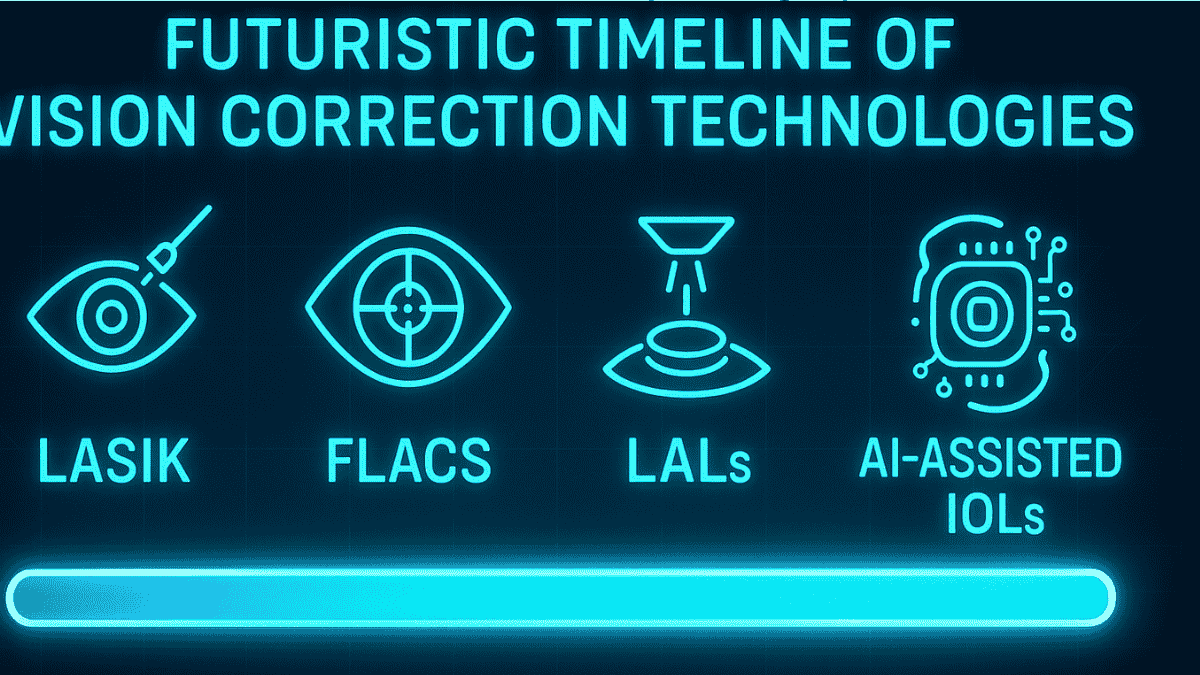
The field of vision correction is continually advancing, with ongoing research and technological breakthroughs. New technologies are emerging that promise to further refine outcomes for both laser eye surgery procedures like LASIK and for cataract treatment. These innovations aim to provide more precise, personalized, and effective vision correction options.
For instance, femtosecond laser technology, already a staple in creating precise corneal flaps for LASIK (often referred to as “bladeless LASIK” or “all-laser LASIK“), is also increasingly used in cataract surgery. In femtosecond laser-assisted cataract surgery (FLACS), the laser can automate certain steps, such as creating corneal incisions, opening the lens capsule (capsulotomy), and fragmenting the cataractous lens, potentially leading to more predictable outcomes and quicker surgery recovery times for some cataract patients. Light adjustable lens technology is another exciting advancement.
As technology progresses, we are likely to see even better integration between various types of vision correction. This could involve more sophisticated ways to combine or sequence treatments like LASIK and subsequent cataract surgery or lens exchange procedures. The goal is to offer tailored solutions that address an individual’s unique vision issues throughout their life, improving their ability to see clearly and reduce their need for corrective eyewear. The ongoing development of new intraocular lenses, including those that can better accommodate or mimic the eye’s natural focusing ability, also holds great promise for future cataract patients, including post-LASIK cataract patients.
Conclusion
So, to answer the initial query: can you get cataracts after LASIK surgery? Yes, you absolutely can, but it is important to understand that the LASIK procedure itself is not the cause. Cataracts are a common, age-related change to the eye’s natural lens that affects many people live as they get older, regardless of any previous eye surgery like LASIK.
If you are considering LASIK to correct vision, concerns about potentially developing cataracts in the distant future should not be a primary deterrent. LASIK can offer many years, often decades, of improved laser vision and a reduced need for glasses or contact lenses. Should you develop cataracts later in life, modern cataract surgery is a highly successful and available cataract treatment, even for those with a LASIK history.
Remember, each person’s eyes and vision needs are specific. Consulting with an experienced eye care professional or a cataract surgeon is the best course of action. They can provide advice based on your individual eye health, lifestyle, and any prior procedures like in situ keratomileusis, ensuring you receive the most appropriate care for your long-term eye health.
Related Article
Safe LASIK Alternatives for Different ConditionsFAQ
Yes, it is possible to develop cataracts after LASIK surgery. LASIK corrects vision by reshaping the cornea, while cataracts affect the lens and are mostly age-related.
No, LASIK does not increase cataract risk. It only alters the cornea and has no effect on the eye’s natural lens where cataracts form.
Yes, cataract surgery is still possible after LASIK. Surgeons will use advanced diagnostics to account for changes made to the cornea during your previous LASIK procedure.
Cataracts typically develop many years after LASIK, often after age 60. LASIK is usually performed in younger adults, so the procedures are decades apart.
Cataract surgery after LASIK can be more complex due to changes in corneal shape. Surgeons use specialized formulas to calculate lens power accurately.
Post-LASIK patients may benefit from monofocal, toric, or light-adjustable lenses depending on their vision goals and corneal shape. Your surgeon will guide the best option.
Sharing your LASIK history helps your surgeon select appropriate lens calculation methods and avoid potential vision mismatches after cataract surgery.
No, cataracts do not form as a complication of LASIK. LASIK does not involve the eye’s natural lens, where cataracts develop.
IOL power calculations can be less predictable after LASIK, but advanced formulas like Haigis-L and Barrett True K improve accuracy significantly.
You may still need glasses depending on the IOL type chosen. However, modern lens options can reduce or eliminate the need for glasses post-surgery.
Yes, multifocal IOLs can be used after LASIK, but careful evaluation is required due to corneal changes that may affect visual outcomes.
Devices like the IOLMaster and Lenstar, which use optical biometry, are commonly used to assess axial length and corneal shape in post-LASIK patients.
Cataracts are very common with aging, but not guaranteed. Lifestyle, genetics, UV exposure, and health conditions all influence cataract development.
Wearing UV-protective sunglasses, avoiding smoking, maintaining a healthy diet, and managing diabetes can help reduce cataract risk after LASIK.
Yes, LALs allow fine-tuning of vision after surgery and are especially useful for post-LASIK patients with complex vision correction needs.
Yes, cataract surgery is considered safe for LASIK-treated eyes when performed by an experienced surgeon using proper planning techniques.
No, cataract surgery does not reverse LASIK. It replaces the natural lens, while LASIK affects the cornea. Both surgeries can complement each other.
You should consider cataract surgery when vision becomes significantly impaired. Your LASIK history does not alter the typical timing for cataract treatment.
Gather your LASIK records, discuss your vision goals with your surgeon, and undergo detailed eye measurements for accurate IOL planning.
Modern cataract surgery offers precise vision correction, fast recovery, and options to further reduce dependence on glasses, even after previous LASIK.
Sources
NEI – Cataracts Information

